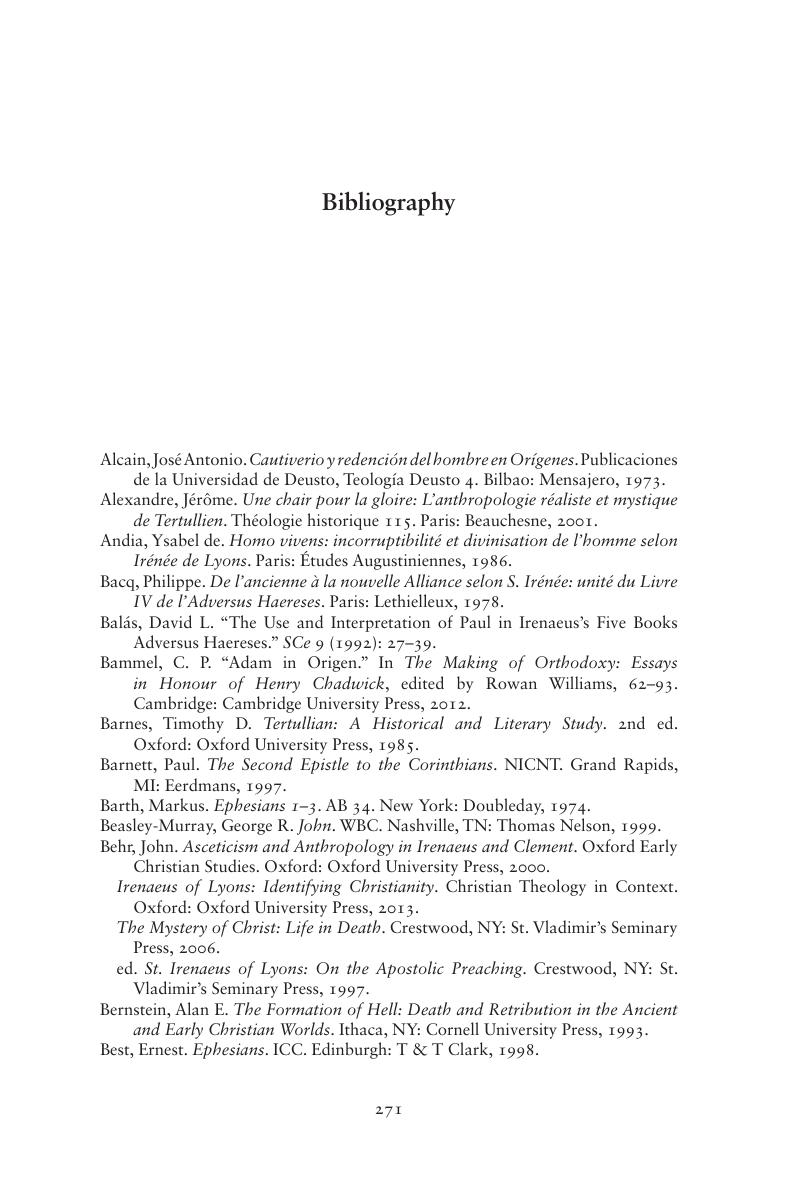Book contents
- Resurrection as Salvation
- Resurrection as Salvation
- Copyright page
- Dedication
- Contents
- Tables
- Acknowledgments
- Abbreviations
- Introduction
- 1 Resurrection of All for Judgment or of the Righteous as Salvation?
- 2 Irenaeus: Resurrection and Salvation through the Spirit
- 3 Tertullian: Resurrection and Judgment
- 4 The Valentinian Treatise on the Resurrection and Gospel of Philip: Resurrection and Salvation into True Reality
- 5 Origen: Resurrection and Moral Transformation
- 6 Methodius of Olympus: Resurrection, Salvation from Sin, and Judgment
- Conclusion
- Bibliography
- Index of Ancient Sources
- Subject Index
- References
Bibliography
Published online by Cambridge University Press: 28 July 2018
- Resurrection as Salvation
- Resurrection as Salvation
- Copyright page
- Dedication
- Contents
- Tables
- Acknowledgments
- Abbreviations
- Introduction
- 1 Resurrection of All for Judgment or of the Righteous as Salvation?
- 2 Irenaeus: Resurrection and Salvation through the Spirit
- 3 Tertullian: Resurrection and Judgment
- 4 The Valentinian Treatise on the Resurrection and Gospel of Philip: Resurrection and Salvation into True Reality
- 5 Origen: Resurrection and Moral Transformation
- 6 Methodius of Olympus: Resurrection, Salvation from Sin, and Judgment
- Conclusion
- Bibliography
- Index of Ancient Sources
- Subject Index
- References
Summary

- Type
- Chapter
- Information
- Resurrection as SalvationDevelopment and Conflict in Pre-Nicene Paulinism, pp. 271 - 284Publisher: Cambridge University PressPrint publication year: 2018



